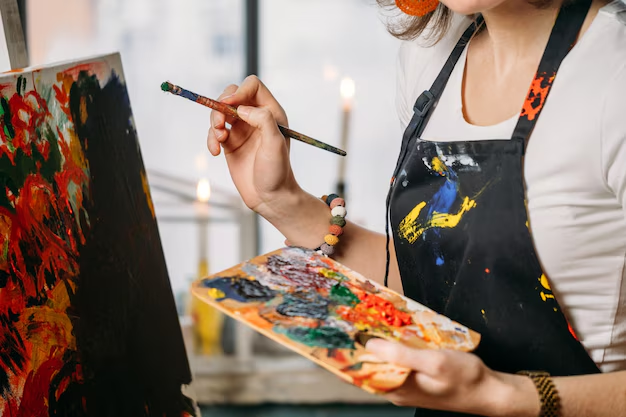Art has been an essential part of human civilization for millennia, capturing our thoughts, emotions, and beliefs across time. It serves as both a reflection of history and a lens through which we view the world around us. The journey from classical to contemporary art showcases how culture, technology, and philosophy have shaped and reshaped creative expression. Let’s explore this fascinating evolution, tracing art from its classical origins through to its modern-day manifestations.
Classical Art: The Foundations of Artistic Expression
Classical art, rooted in the traditions of ancient Greece and Rome, is where Western art first began to take shape. This era emphasized harmony, proportion, and idealized forms. Artists focused on the human figure, depicting it with realistic proportions and expressions. Greek sculptures like The Discus Thrower and Roman frescoes in Pompeii give us a window into how the classical world valued humanism, capturing not just the appearance but the essence of humanity.
The classical style of art was rooted in the pursuit of perfection. Artists adhered to strict rules of symmetry and balanced proportions, inspired by the philosophy of Plato and Aristotle. It was during this period that the concept of art as a means of representation and storytelling first emerged. Artists like Phidias and Apelles were highly regarded for their mastery of naturalism, which influenced art for centuries.
Medieval Art: A Shift Toward Spirituality
Following the fall of the Roman Empire, art took on a more religious tone during the Medieval period. The Catholic Church became the dominant patron of the arts, and religious themes became the focal point of artistic expression. Medieval artists focused on iconography—depicting biblical scenes, saints, and religious figures.
While the Classical emphasis on naturalism was lost, medieval art introduced new styles that focused on symbolism and abstraction. The art of the period was meant to convey divine messages and inspire religious devotion. Iconic works such as the illuminated manuscripts and the majestic stained glass windows in cathedrals were designed not only to educate the illiterate masses but also to bring the divine closer to humanity.
Renaissance Art: The Rebirth of Realism and Humanism
The Renaissance marked a dramatic return to the ideals of classical antiquity. This cultural rebirth, which began in Italy in the 14th century, reignited a passion for humanism, proportion, and naturalism in art. The Renaissance saw the rise of master artists such as Leonardo da Vinci, Michelangelo, and Raphael, who pushed the boundaries of creativity and human understanding.
Renaissance art emphasized a deep understanding of anatomy, perspective, and light, resulting in highly realistic depictions of the human figure and the natural world. Leonardo da Vinci’s Mona Lisa and Michelangelo’s David are perfect examples of this era’s skillful combination of science, philosophy, and artistic expression. The Renaissance ultimately laid the groundwork for much of Western art’s development in the centuries that followed.
Baroque and Rococo: Drama, Emotion, and Ornamentation
As the Renaissance gave way to the Baroque period in the 17th century, artists embraced dramatic contrasts of light and shadow, emotional intensity, and a sense of movement. Artists like Caravaggio and Peter Paul Rubens used bold techniques to evoke deep emotional responses. Baroque art often depicted religious and mythological subjects, but with a heightened sense of drama and realism.
In contrast, the Rococo period, which emerged in France during the early 18th century, embraced lighter, more playful themes. Rococo art was characterized by ornate, detailed designs and a focus on sensuality and elegance. François Boucher and Jean-Honoré Fragonard were key figures in this style, which often depicted scenes of romance, leisure, and myth.
Modern Art: Breaking Traditional Boundaries
The 19th century brought dramatic changes to the art world with the advent of modernism. The Industrial Revolution, along with political and social upheaval, prompted a new wave of creative expression. Artists began to reject classical conventions and explore new ways of seeing and representing the world.
Impressionism, led by artists like Claude Monet and Edgar Degas, sought to capture fleeting moments of light and color, reflecting a more subjective and personal view of the world. Meanwhile, movements like Cubism, pioneered by Pablo Picasso and Georges Braque, broke down traditional forms, using geometric shapes to depict objects from multiple perspectives simultaneously.
As the 20th century progressed, the rise of abstract art challenged the very definition of what art could be. Artists like Wassily Kandinsky and Jackson Pollock used shapes, colors, and textures to convey emotion and ideas rather than represent the physical world. This abstraction led to the development of other movements such as Surrealism, Expressionism, and Minimalism, each pushing the boundaries of traditional art even further.
Contemporary Art: Diverse, Inclusive, and Global
In the contemporary era, art is marked by a vast diversity of styles, mediums, and approaches. With the rise of digital technology, the boundaries of art have expanded even further, incorporating elements such as video, installation, and performance art. Today’s artists explore themes such as identity, globalization, technology, and environmentalism.
Contemporary art often seeks to challenge social norms, provoke thought, and engage with audiences on a more interactive level. The work of artists like Banksy, Ai Weiwei, and Jeff Koons reflects the ongoing evolution of art as it engages with the complexities of the modern world.
FAQs about the Evolution of Art
- How did art evolve from classical to modern times? Art evolved through a series of stylistic changes influenced by cultural, social, and technological developments. From the realistic human figures of classical art, it moved through symbolic medieval art, the humanism of the Renaissance, emotional Baroque and Rococo, and the modernist rejection of tradition.
- What is the main difference between classical and Renaissance art? Classical art emphasized idealized human figures and proportion, while Renaissance art returned to these ideals but with a greater focus on naturalism, scientific perspective, and human emotion.
- Why was religion so important in Medieval art? Religion dominated medieval life, and the church was a major patron of the arts. Artists focused on religious themes to educate the masses, who were largely illiterate, and to communicate spiritual truths.
- What are the key characteristics of Baroque art? Baroque art is characterized by dramatic use of light and shadow, emotional intensity, and a sense of movement. It often aimed to engage viewers emotionally, with religious and mythological subjects.
- How did Impressionism change the art world? Impressionism broke from traditional realism by capturing the effects of light and atmosphere, emphasizing color and emotion over detailed depiction. It challenged the idea that art should be an exact representation of the world.
- What is the role of technology in contemporary art? Technology plays a huge role in contemporary art, allowing for new forms of expression like digital art, video installations, and interactive experiences. It has expanded the possibilities of artistic mediums.
- How does contemporary art reflect modern issues? Contemporary art often addresses current social, political, and environmental concerns, using art as a tool for reflection, protest, and dialogue about modern life.
Conclusion
The evolution of art, from its classical origins to the contemporary innovations we see today, reflects humanity’s ongoing quest for expression, understanding, and connection. Every shift in artistic style tells the story of the time, the people, and the values that shaped it. From the realism of the Renaissance to the abstraction of the 20th century and the dynamic diversity of today’s art world, art continues to evolve and inspire.
Key Takeaways
- Art has evolved from the classical ideals of proportion and harmony to the expressive freedom of contemporary styles.
- The Renaissance was a pivotal moment in reviving classical principles, while modern and contemporary art has focused on breaking those traditional boundaries.
- Contemporary art is marked by diversity, often engaging with societal issues and utilizing new technologies and media.

